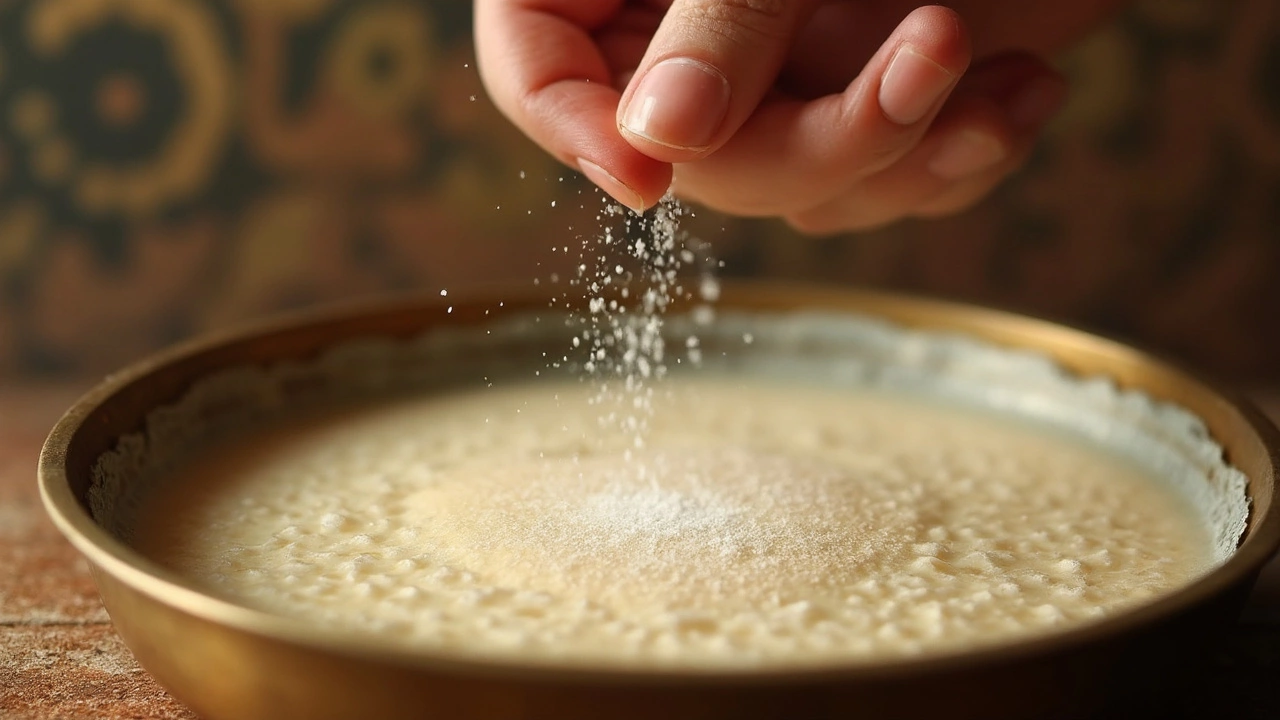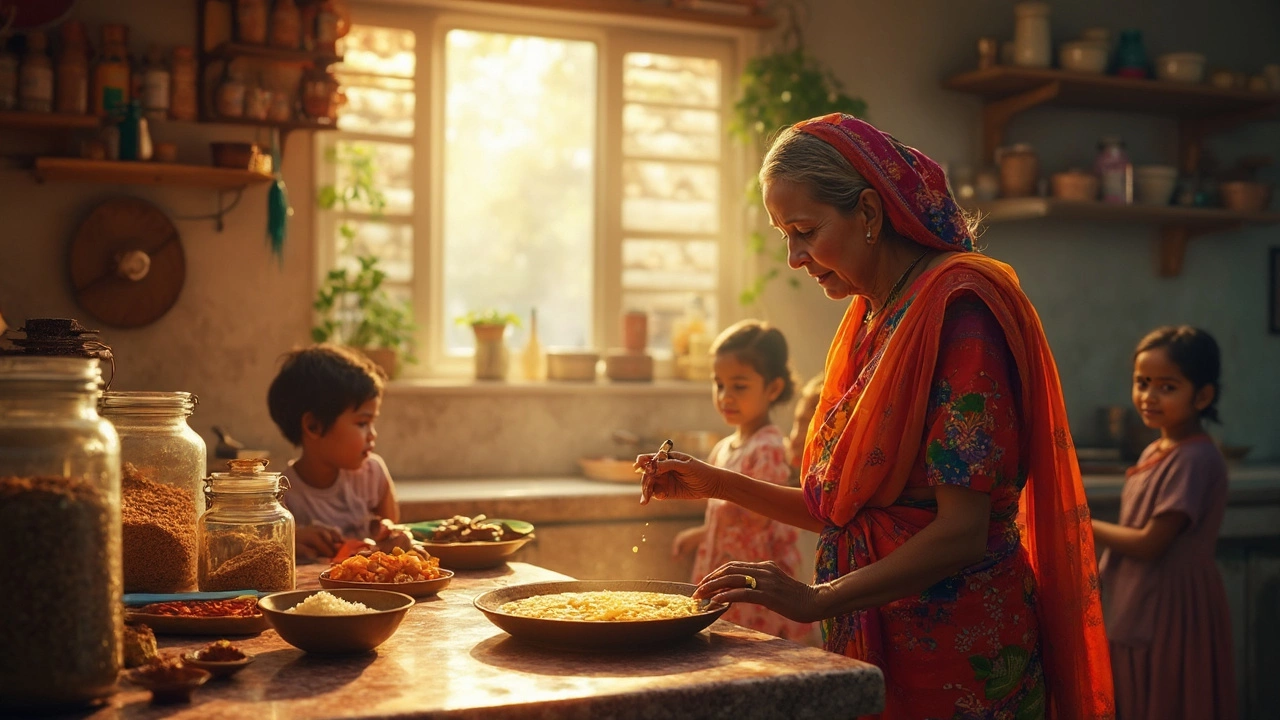If you’re like me and grew up watching your mom or grandma whip up fluffy, golden dosas, you’ve probably seen a tiny salt fight break out in the kitchen. Some people add salt right away, and others insist on waiting until the batter ferments. Who’s right? Does salt really change anything significant in your dosa?
The honest answer: salt isn’t just about taste. The timing of when you add it can actually make or break your dosa game. Salt doesn’t just “season” the mixture; it interacts with the wild yeast and bacteria that turn your plain rice and dal into bubbly, tangy, perfect batter.
It’s the science that gets people curious. In hot weather, the whole process acts totally different than in winter. I’ve tried both ways over the years—sometimes out of habit, sometimes rushing because guests were landing up! If you’re looking to get consistent results, knowing when (and why) to add salt makes all the difference. Stick around, because there’s more to getting that perfect, crispy, golden dosa than you might think.
- Why Salt Is So Controversial in Dosa Batter
- What Happens If You Add Salt Before Fermentation?
- When Is the Best Time to Add Salt?
- Tips for Perfect Dosa Batter Every Time
Why Salt Is So Controversial in Dosa Batter
This whole salt debate wouldn’t exist if dosa was just about slapping together rice and dal. It’s really about fermentation—that slightly tangy, airy thing that separates good dosas from the rubbery ones. Now, adding salt ahead of time has always split home cooks and experts. Some families follow old-school advice while others just want a shortcut. But what’s the real deal?
Here’s what’s happening: Salt affects how yeast and bacteria do their jobs in the batter. If you ask a food scientist, they’ll tell you salt slows down the fermentation process. Why? Salt draws out moisture and can hold back the growth of the wild lactic acid bacteria you need for that classic tang. But there’s a twist—a little salt can actually help if your kitchen feels like Chennai in May, and fermentation threatens to spiral out of control.
"Adding salt after fermentation ensures better rise and a softer texture. Salt before can make your batter flat, especially if the weather is cold," says Chef Kunal Kapur, who’s cooked more dosas than most of us could eat in a year.
Here’s how opinions break down in most households:
- Add salt before: Batter doesn’t turn sour too quickly in hot places. Can slow down fermentation if your kitchen is a furnace.
- Add salt after: Batter rises better and gets super airy, because nothing is holding back the microbes. Works best if it’s cooler where you live.
In fact, a 2023 survey by Indian Home Cooking Forum (yeah, that exists!) found that almost 47% of home cooks added salt after fermentation, while 38% did it before—mostly due to family tradition or climate.
| When Is Salt Added? | Percentage of Home Cooks (2023 Survey) |
|---|---|
| Before Fermentation | 38% |
| After Fermentation | 47% |
| Mixed or No Preference | 15% |
So when you hear someone claim that adding salt before ruins everything, or the opposite, remember—it’s a practical thing, not just a family legend. The salt in dosa batter decision mostly depends on temperature, how much time you have, and how sour you want those dosas to taste.
What Happens If You Add Salt Before Fermentation?
This question has probably split more South Indian homes than paneer versus no-paneer in dosa—that’s how big a deal it is. Here’s what really goes on when you add salt to dosa batter before letting it ferment.
Salt helps with taste, yes, but in chemistry terms, it slows yeast and good bacteria that are behind that airy, spongy dosa texture.
- Adding salt early slows down lactic acid bacteria and yeast activity. The batter won’t bubble as much, and sometimes the dosas seem flatter and less tangy.
- If you’re in a tropical area or in summer, this isn’t a huge problem. Warm weather speeds up fermentation, so salt won’t hold things back as much.
- But if you live somewhere cool, or it’s winter, salt can almost stall the process. The batter often takes hours longer to get the classic rise and slight sourness.
A study by the Central Food Technological Research Institute showed that adding 2% salt to your dosa batter before fermenting slowed down gas and acid formation by about 30%. That means slower rise and weaker flavor.
| Scenario | Fermentation Time Needed | Dosa Texture |
|---|---|---|
| Salt Added Before | 10-14 hours | Less airy, mild flavor |
| Salt Added After | 8-10 hours | Fluffy, tangy, classic taste |
The bottom line? Salt is a bit of a double-edged sword. Yes, you need it for flavor, but putting it in too early holds back the natural science that makes a perfect dosa. If you’re impatient (or it’s chilly), keep that salt for later. It’s honestly one of the easiest ways to guarantee good results, especially if you’re new to making salt in dosa batter decisions.

When Is the Best Time to Add Salt?
Let’s get right to it. If you’re chasing perfectly fermented dosa batter, most experienced cooks and even South Indian chefs recommend adding salt after fermentation. Why? Salt slows down the activity of the wild yeast and lactic acid bacteria that do the heavy lifting in turning rice and dal into a bubbly, tangy batter. If you add it too soon, you risk sluggish fermentation, which means flat, lifeless dosas with none of that signature flavor.
But here’s the real scoop. If you live in a hot and humid place, the difference may be tiny because fermentation happens crazy fast anyway. In winter or in air-conditioned kitchens (yup, I’ve learned the hard way), salt can make a real dent in your batter’s rise. Adding it later just after the batter has risen overnight is best for most homes.
- If you want a schedule: Grind your rice and dal, mix, let the batter rest and ferment (usually 8-12 hours), then stir in the salt before you pour your first dosa.
- If you have to refrigerate the batter for later, add salt just before storing. This helps the batter keep fresh without going sour super fast.
Check out this quick breakdown:
| Step | Add Salt? | Effect on Fermentation |
|---|---|---|
| Before fermentation | No | Fast and airy batter |
| After fermentation | Yes | Keeps taste, no slow-down |
Here’s one more reason not to skip this: if you use iodized salt, it can interfere with fermentation more than rock salt or sea salt. A lot of restaurant kitchens use non-iodized salt for this very reason.
The bottom line: For the best salt in dosa batter results, add it after your batter is nice and puffy. You’ll nail that taste and crispy texture every time. And nobody has to fight about salt again!
Tips for Perfect Dosa Batter Every Time
If you’ve ever had a dosa that turned out flat or sour, you know how disappointing it feels. Getting the salt in dosa batter right is one part, but there’s a whole bunch of other tricks that can dial up your batter game. Let’s break it down step-by-step.
- Choose the right rice and dal: Stick to regular short-grain rice or dosa rice. Skip basmati. For dal, urad dal (split black gram) is a must. Don’t swap with other dals—your dosa won’t turn out the same.
- Wash and soak properly: Wash rice and dal under running water until the water turns mostly clear. Soak them separately for at least 4-6 hours. If you’re in a hurry, 2-3 hours in warm water still works, but the texture will be a bit off.
- Grind in batches: If you have a wet grinder, great. If not, a regular blender works, but grind in small portions. Too much in one go and the batter gets hot—bad news for fermentation. Aim for a smooth, slightly grainy consistency for rice and silky for dal.
- Don’t drown the batter: Add water slowly as you grind. The final batter should be pourable, not runny like water or as thick as cake batter.
- Fermentation is all about temperature: Warm environments work best. In summer, 6-8 hours is usually enough. Winter? Try keeping the bowl inside your oven with the light on, or near the stove. If nothing helps, pop a pinch of baking soda after fermentation—not before.
- Timing your salt: For best results, add salt after fermentation. This gives the batter the room to bubble up nicely. But in hot humid places, salt before fermenting can actually slow things down if your batter tends to rise too fast and get sour. Tweak timing based on your kitchen.
- Use a steel or glass bowl for fermenting: Avoid plastic since it holds on to odors. Always use a large enough bowl—the batter can double in size.
- Mix before pouring: Give the batter a gentle stir from the bottom before making dosas. That way, every pour will be just as good as the first one.
- Store leftovers smartly: If you made extra, stash it in the fridge right after using. Warm kitchen air makes batter turn sour quickly.
Stick to these tips and you’ll get golden, crisp, and tasty dosas most days—no guessing, no grudges with your dosa pan.
